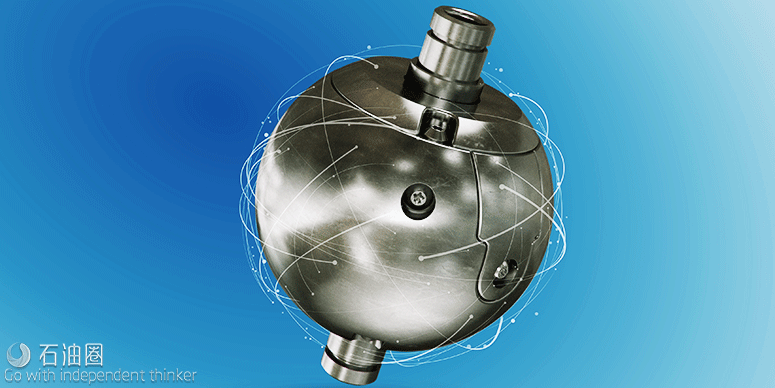Gyroscopic surveys in the oil field have not changed much over the past 20 years. Most conventional systems are sensitive mechanical devices that can be compromised by shock and vibration, which means they must be recalibrated after every single run. The GyroSphere service features a unique sensor that adapts solid-state MEMS technology. Utilizing the Coriolis effect(Coriolis effect is an inertial result that causes deflection of a moving object), the MEMS gyro sensor uses an internal vibrating structure to determine the Earth’s rotation with respect to the sensor. This enables the GyroSphere service to determine azimuth and inertial toolface orientation when sliding with a motor. Not only can MEMS technology withstand challenging downhole conditions, including severe shock and vibration, it means the sensor can be rerun without recalibrating the tool.
Improving drilling efficiency with a completely new technology for measuring gyro surveys
The GyroSphere service is unlike any other gyro-surveying offer in the oilfield today. It delivers more transparent gyro-surveying data that increases drilling operation efficiency and tool reliability while improving access to small target reservoirs. Case studies show that the GyroSphere service can reduce the ellipse of uncertainty up to 45%.
Microelectromechanical systems (MEMS) technology is at the heart of the new GyroSphere service. It’s adapted from the same systems used in robotics, spacecraft, smart phones, drones, and self-balancing personal transports. The technology works off the Coriolis effect, which means the sensor uses a vibrating structure to determine the rate of planetary rotation. And from that rate, the the sensor pinpoints its inclination, azimuth, and the toolface orientation.
Delivering big performance with microtechnology
Gyro surveys with the GyroSphere service are more transparent to drilling operations because the measurement is taken during connections and available immediately after the pumps are on, rather than having to wait 30 minutes for the data. This is because MEMS technology doesn’t need to spin up and stabilize as mechanical gyros do, so up to two surveys can be performed in the time conventional gyros take to start up for just one. The sensor is smart—it knows when to survey, and has the capabilities to report its own status.
MEMS technology doesn’t only make gyro surveying more efficient and smarter, it enables the GyroSphere service to withstand challenging downhole conditions, including severe shock and vibration. Unlike a conventional gyro apparatus that requires multiple tools, the GyroSphere service needs only its single sensor to survey at any inclination, at any depth, and at higher latitudes—all without the need for changing batteries or recalibrating between runs. This makes the GyroSphere service well suited for efficient batch-drilling operations.
APPLICATIONS
■Offshore and onshore drilling
■Anticollision drilling
■Sidetracking
■High magnetic conditions, such as dense well clusters and high latitudes
■Extended-reach drilling
■Precise well placement from multiwell platforms or pads
FEATURES
■Microelectromechanical systems (MEMS) technology
■Single-sensor gyro
■Resistant to shock and vibration
■Survey during connections
■Autoinitiated surveys
■Minimized power requirements
■Self-monitoring and status reporting
BENEFITS
■Reduces gyro-surveying time
■Enhances tool reliability
■Minimizes ellipse of uncertainty
■Improves access to small target reservoirs
■Performs surveys at any depth, at all inclinations, and at any latitude

 石油圈
石油圈
